If you're on the fence between buying a "regular" (but still pretty big) smartphone and a supersized smartphone (aka phablet), then the Samsung Galaxy S6, Galaxy S6 edge and Galaxy Note 4 might be on your radar. Let's compare the three phones' features and specs.
Size

The Galaxy S6 and GS6 edge aren't exactly small, but they still look a little undersized next to the Note. The Galaxy Note 4 is 8-9 percent taller and 11-13 percent wider than the two GS6 flagships.
The two GS6 phones, though, are much thinner than the Note 4. The Galaxy S6 edge measures 18 percent thinner than the Note, while the GS6 is 20 percent thinner.
Weight
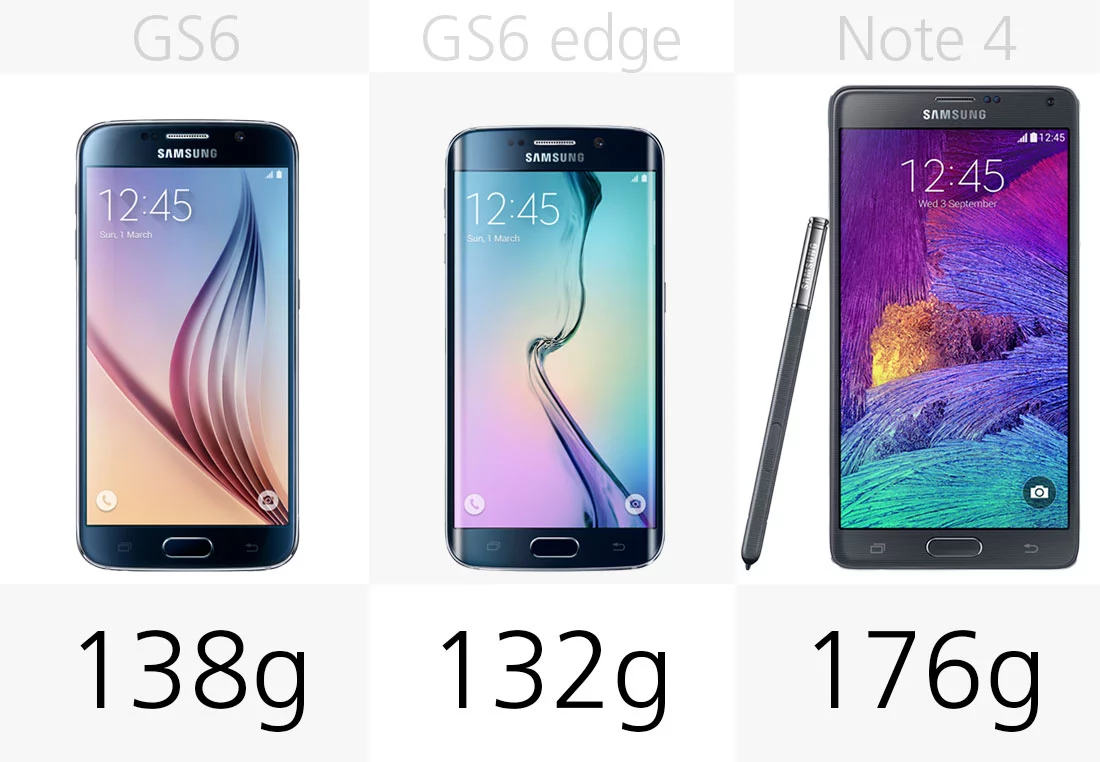
The new flagships are quite the featherweights. The Galaxy S6 is 22 percent lighter than the Note 4, and the GS6 edge is 25 percent lighter.
Build (back)

Samsung has finally ditched plastic and gone all premium with this Galaxy S6 pair. They have Gorilla Glass 4 backs.
The Note 4's back is made of a faux leather plastic material.
Build (sides)

The Note 4 does have metal sides, which go a long way towards giving it a more high-end feel. The GS6es also have aluminum frames.
Colors

Three of the four color options are the same for each handset.
Display (size)

If you want a Galaxy with a big screen, the Note is still your best option. Its display is 25 percent bigger than the two Galaxy S6 phones.
Display (resolution)
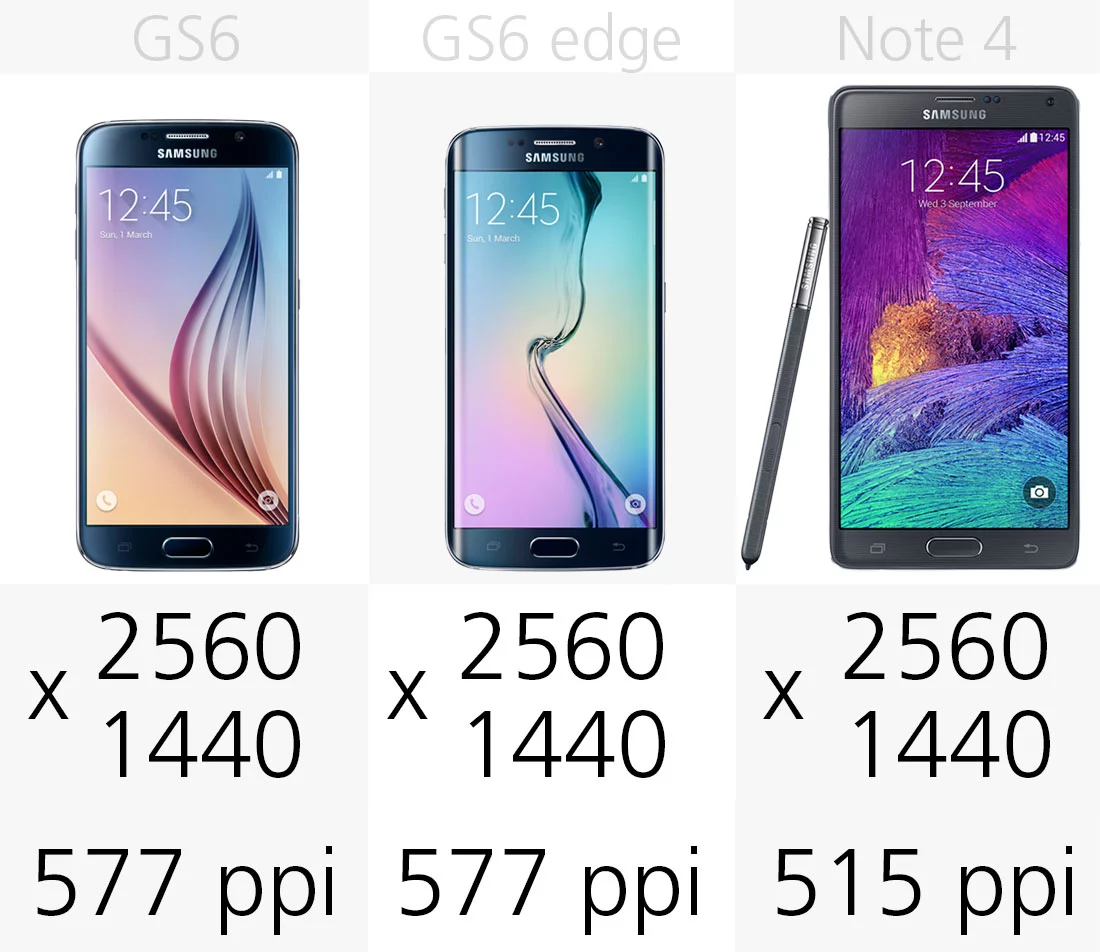
All three have razor-sharp Quad HD displays, though this makes the smaller 5.1-in displays about 12 percent sharper.
Display (type)
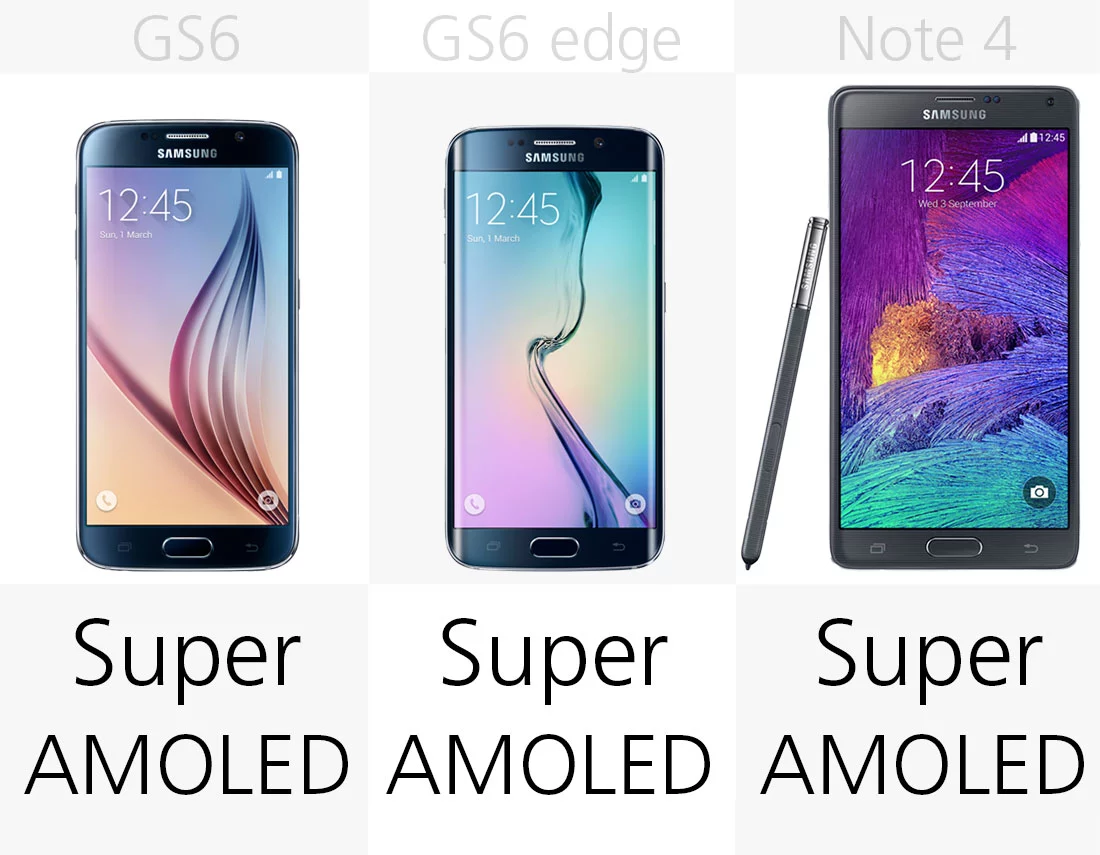
Super AMOLED displays, with their rich colors, deep blacks and high contrast, are par for the course with Samsung flagships.
Curved display
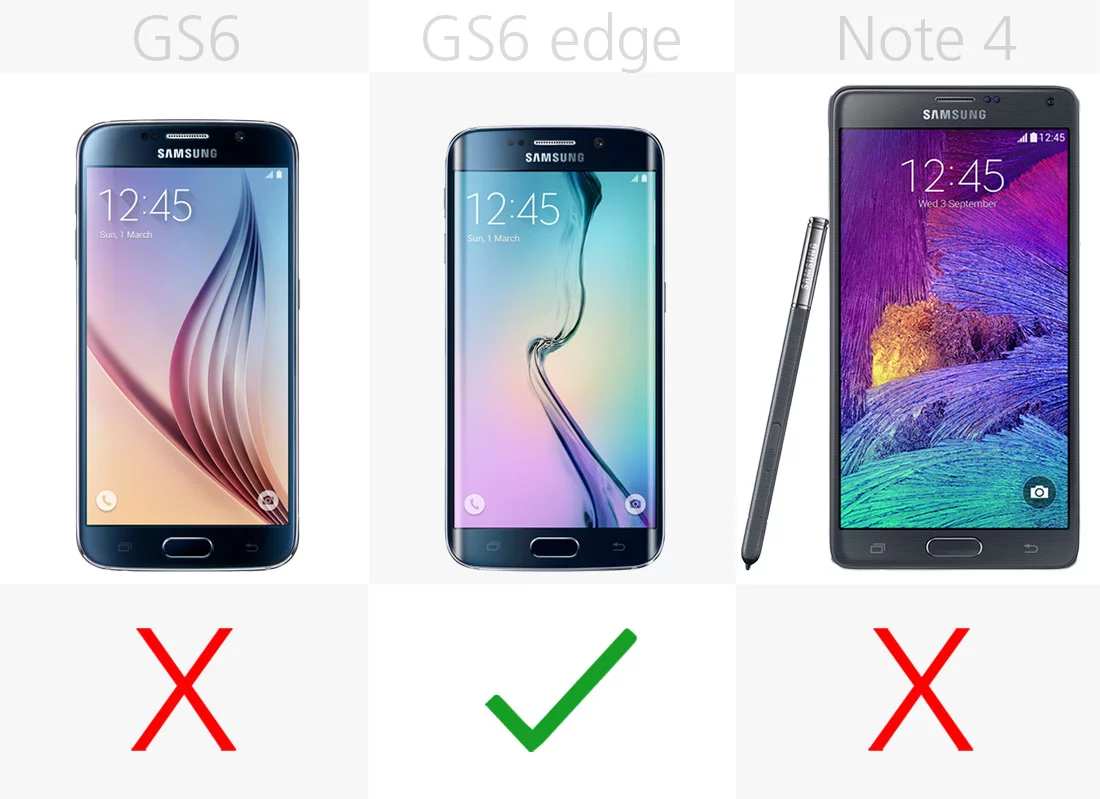
The Galaxy S6 edge has a display that slopes off on either side. It's largely cosmetic, but you can use the edges to launch shortcuts and read incoming notifications.
The Note also has an edge variant, the Galaxy Note Edge, but its markup over the standard Note 4 makes it hard to recommend (and, unlike the GS6 edge, it only curves on one side).
Stylus
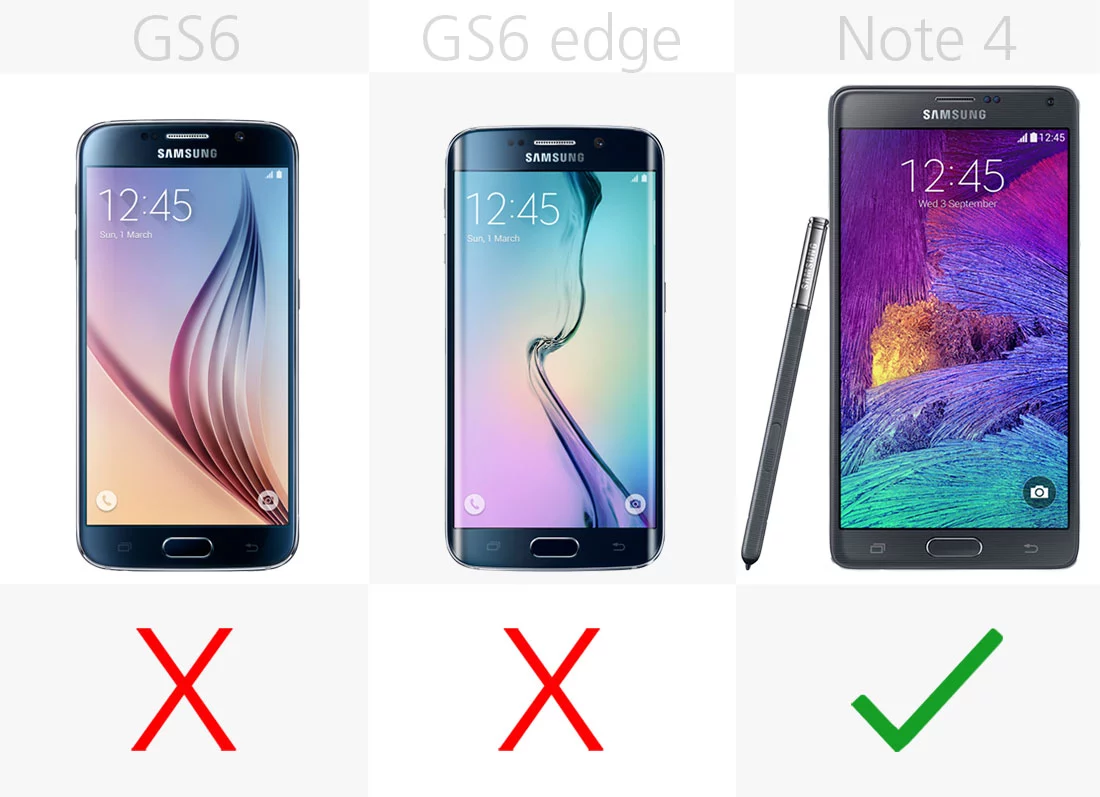
Samsung's S Pen is a big part of the Galaxy Note experience, serving as both a more precise finger replacement and a handy shortcut for saving images and screenshots, or scribbling out notes.
Fingerprint sensor
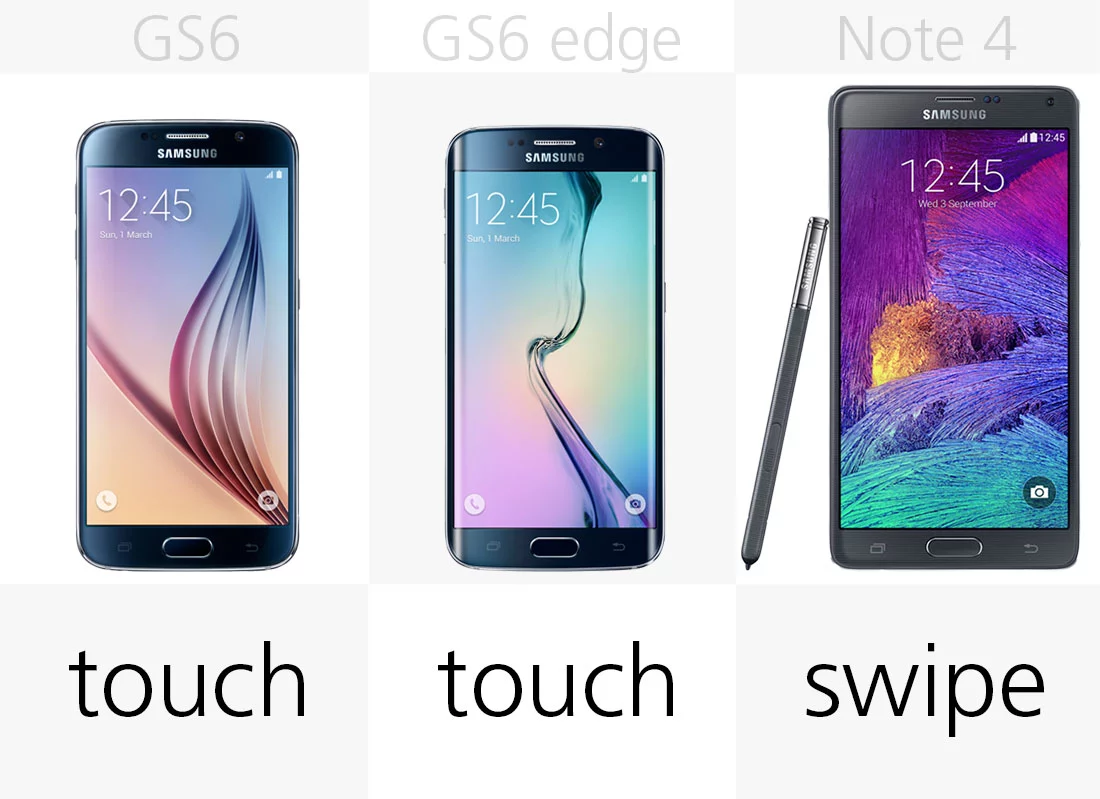
Samsung's swipe-based fingerprint sensor in the Note 4 is solid enough, but was never as seamless as Apple's Touch ID on iPhones and iPads. Well, this is the year that Samsung was able to match Apple with touch-based sensors of its own (though whether it matches in quality will have to wait for our review).
Samsung Pay

Samsung hasn't announced any plans to integrate Samsung Pay, the company's mobile payment service, into older phones like the Note 4. The service not only uses NFC (like Apple Pay) but can also simulate swipe-based credit cards to work at nearly any payment terminal in the world from Day One.
Processor
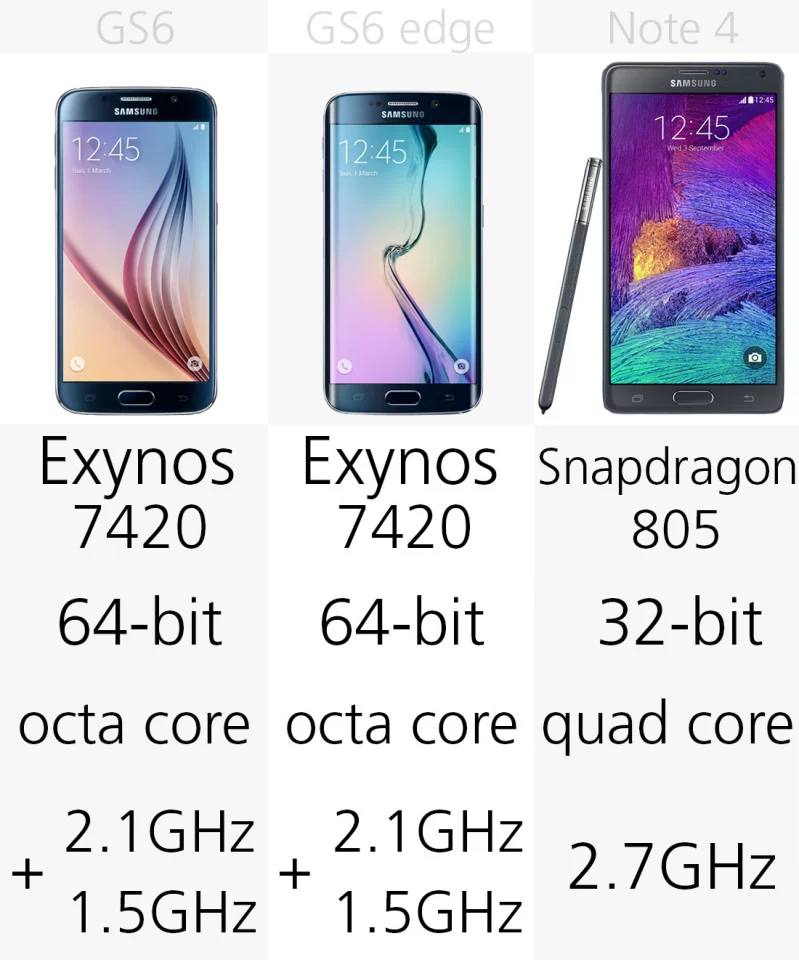
Samsung dropped Qualcomm from its stable with the Galaxy S6 and GS6 edge, switching to its own Exynos processors, even for LTE models.
RAM
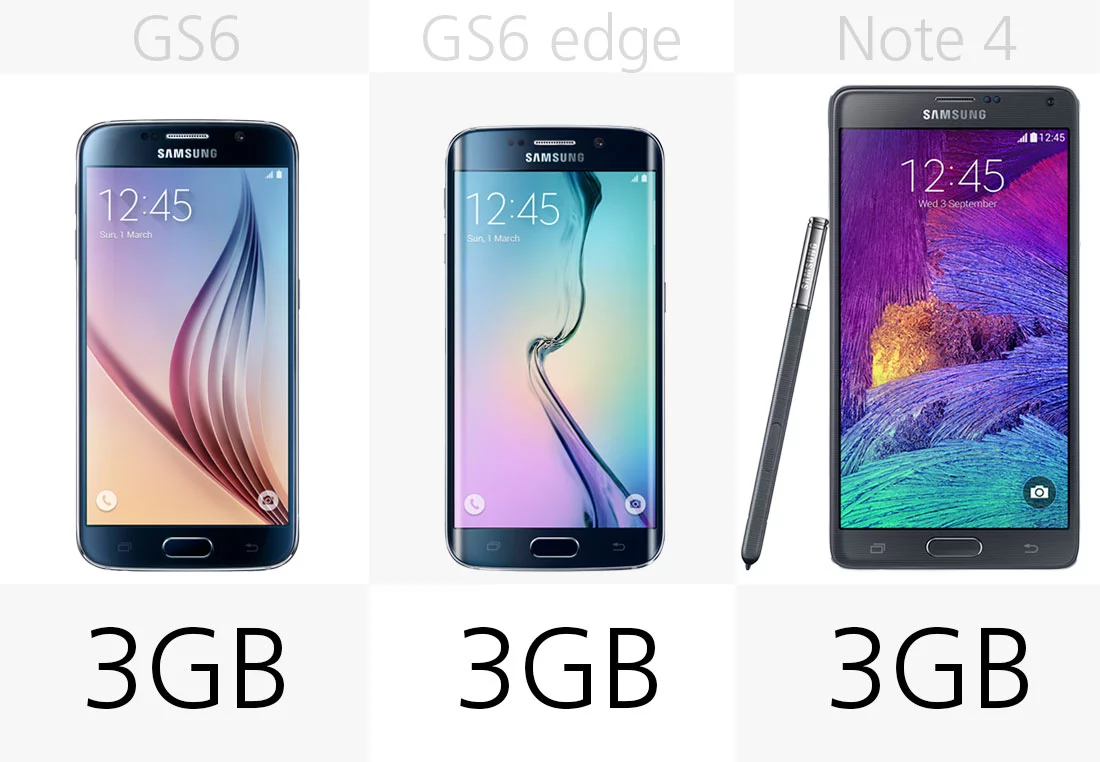
This is the first time we've seen 3 GB of RAM in a Galaxy S flagship, though the Note line has been using 3 GB RAM since 2013's Galaxy Note 3.
Storage
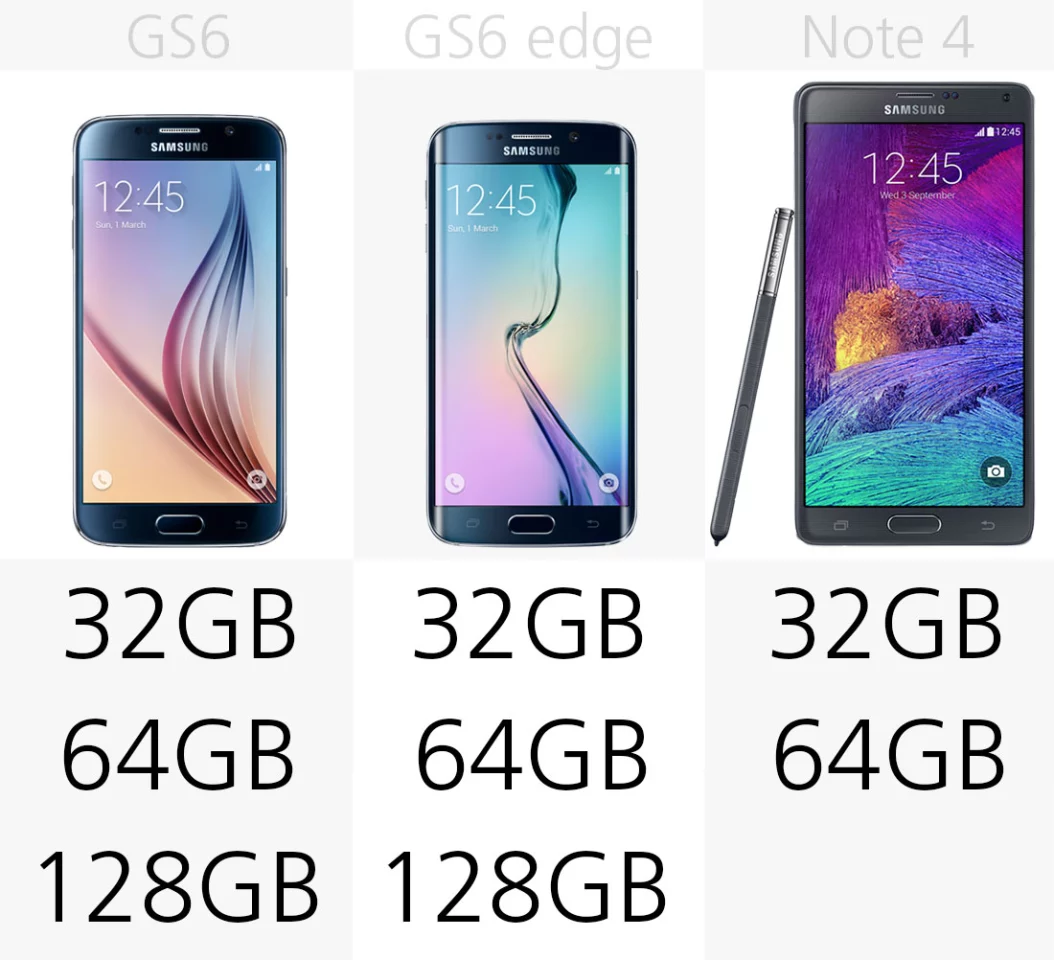
You have more storage tiers to choose from with the pair of Galaxy S6es.
MicroSD
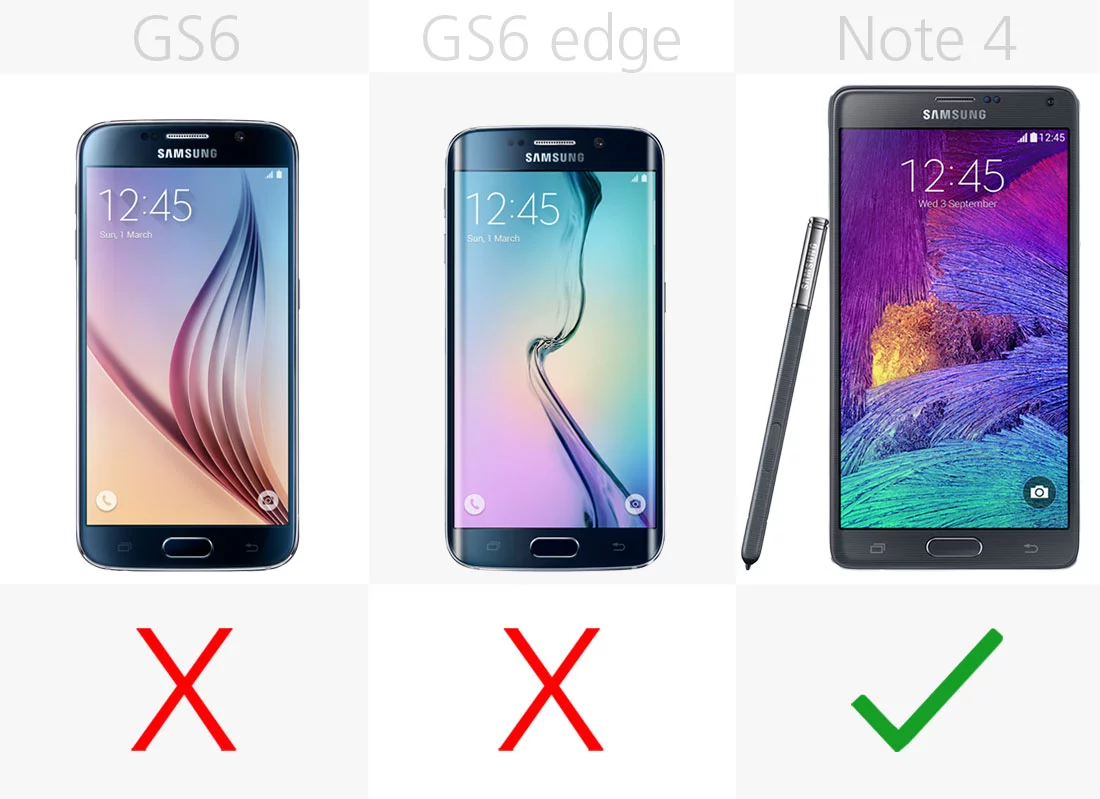
Unlike the Note, though, they don't have microSD card slots – so that internal storage is all you have to work with.
Battery
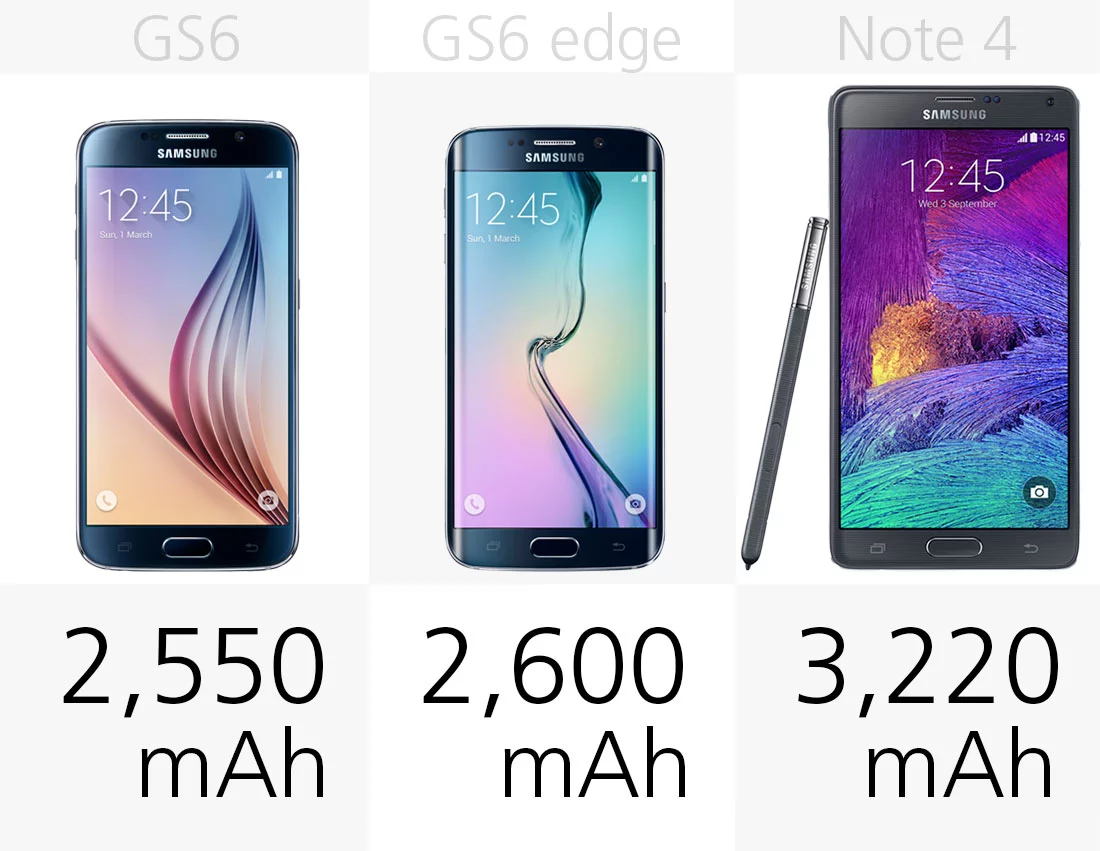
We were happy with the Note 4's battery life – only dropping 10 percent per hour in our streaming test (over Wi-Fi, with brightness at 75 percent). Stay tuned for our review for the word on the new models' uptimes.
Removable battery
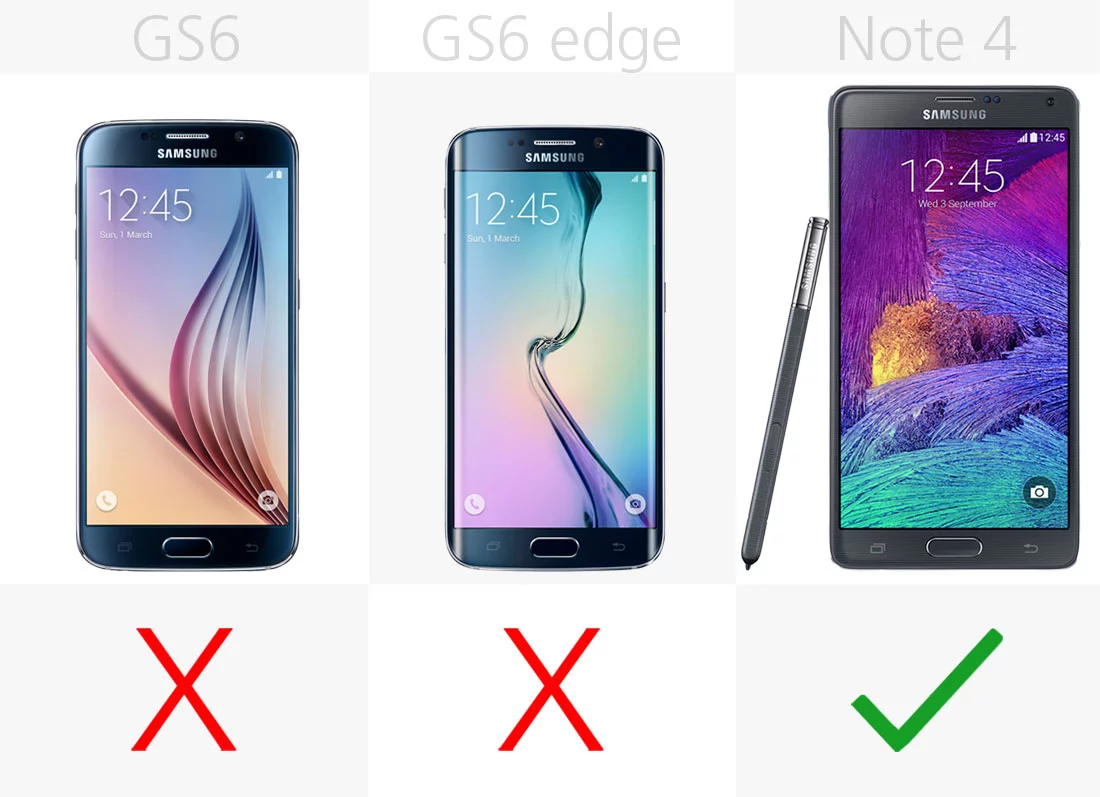
One of the tradeoffs of those more premium designs is that the GS6 and edge have sealed-shut batteries.
Wireless charging (out-of-the-box)
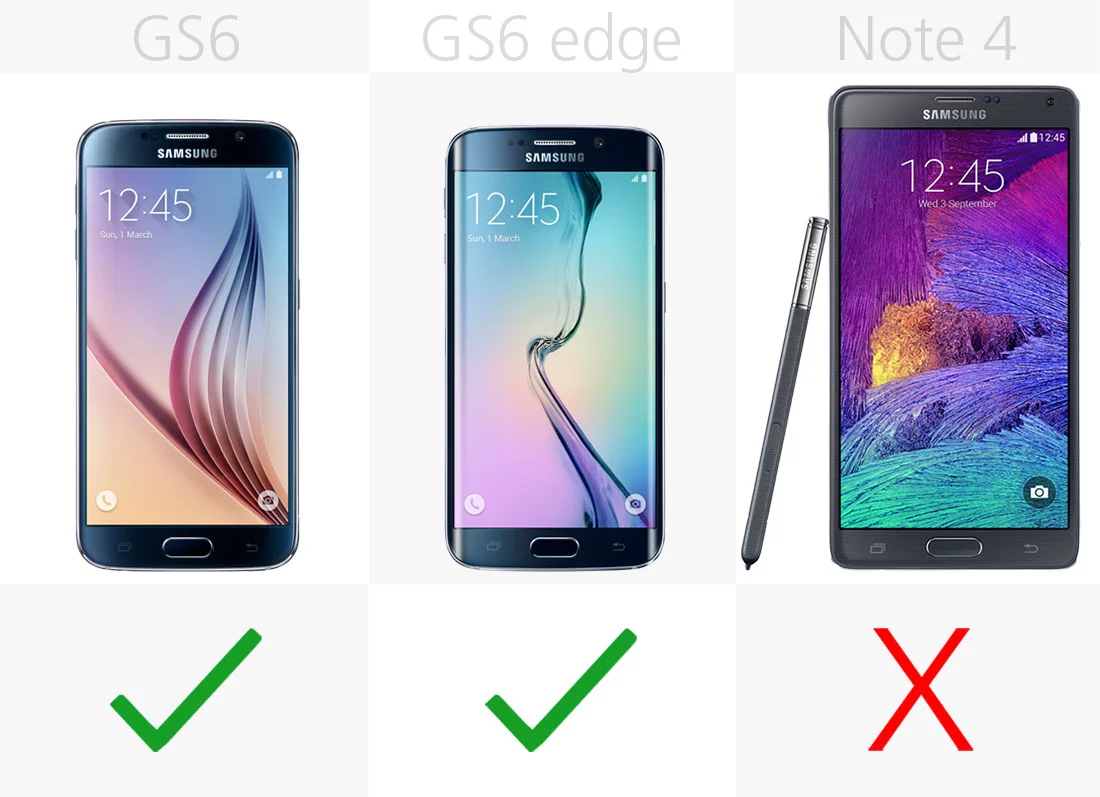
You can buy replacement battery covers for the Note 4 that make it wireless charging enabled (in exchange for a little extra thickness and weight), but the Galaxy S6 and GS6 edge are wireless charging friendly out of the box.
Ultra Power Saving Mode
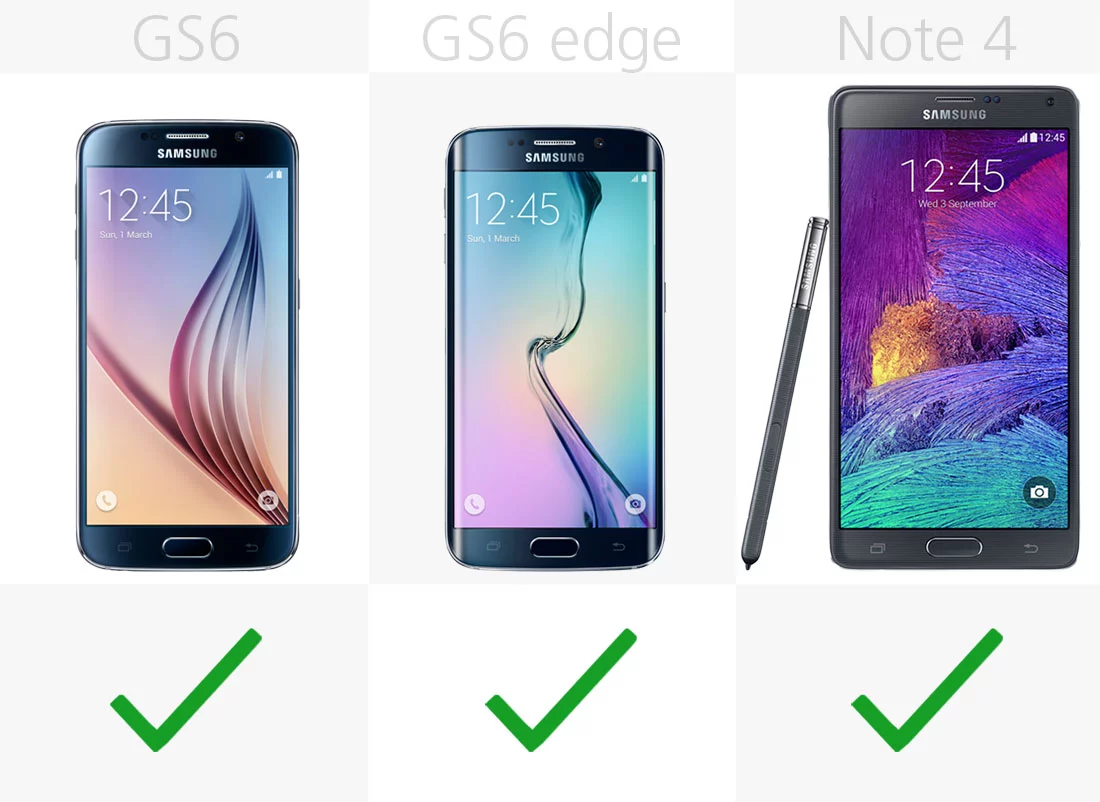
If you find yourself in a jam where your phone is almost out of juice, but you don't have access to a charger, Ultra Power Saving Mode can keep you on the grid for an extra day or so (by giving you a simple home screen with very limited access to apps).
Fast charging
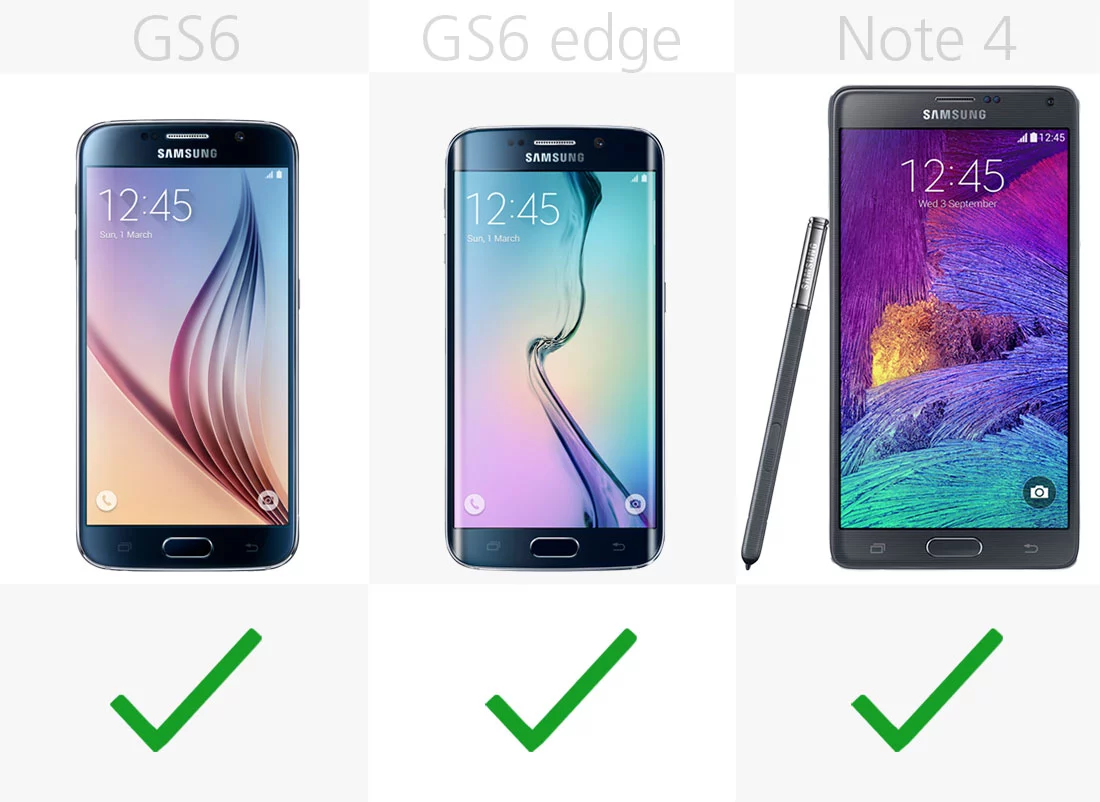
Though the new models are based on a different standard than the Note 4's Qualcomm Quick Charge 2.0, all three phones offer quick charging features for juicing up your phone's battery to a respectable state without wasting too much time.
Camera megapixels (rear)

Like the Note 4, the two new models have 16 MP sensors in their rear cameras.
Camera megapixels (front)

They also get the Note's wide-angled selfie capabilities, only with higher-resolution front shooters.
OIS
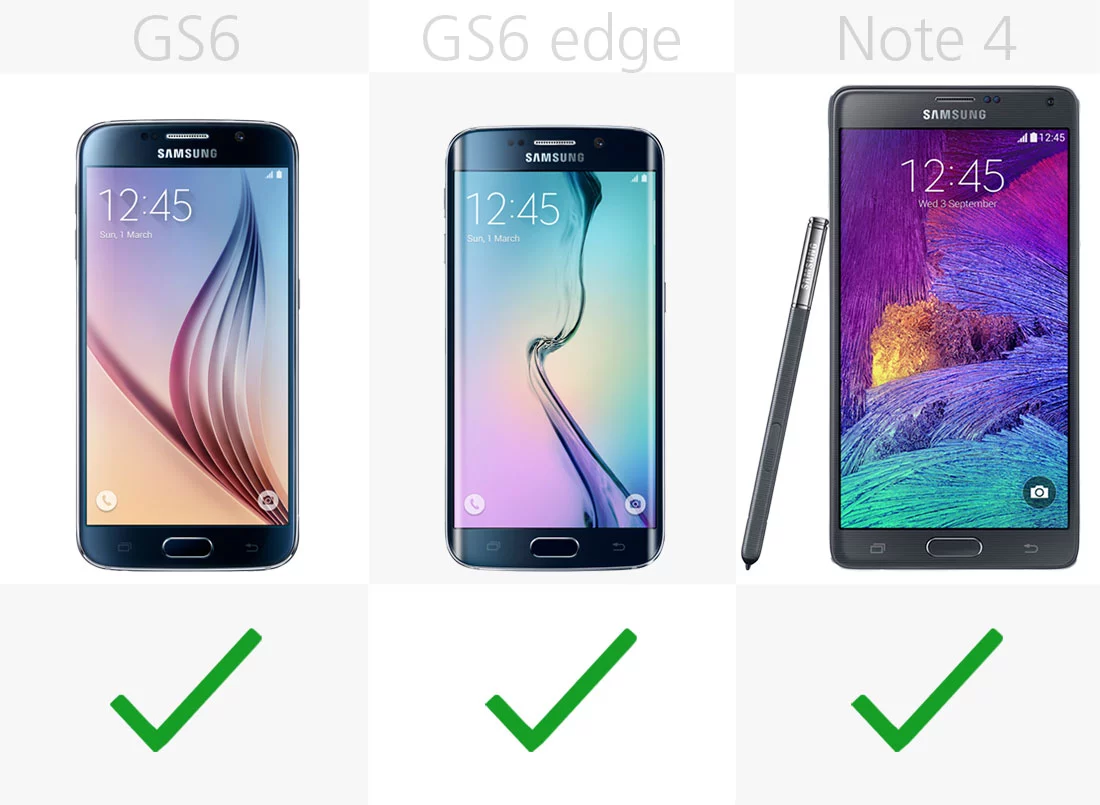
All three phones have Optical Image Stabilization on board too, to help you take clearer shots with shaky hands.
Camera aperture

The new models have slightly wider aperture than the Note's camera does.
Gear VR compatibility
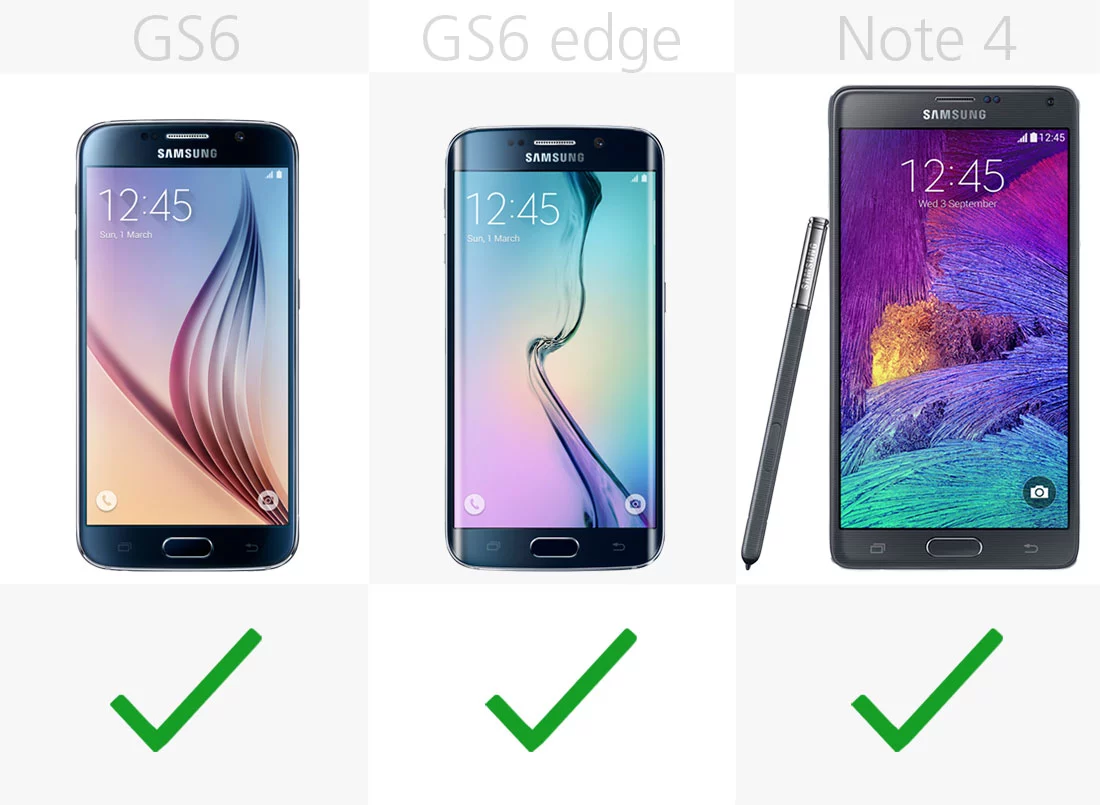
All three can unlock the power of the best virtual reality headset you can buy today, the Samsung Gear VR. The new phones require a newer model of Gear, though, which can power your phone via USB to minimize or eliminate battery drain.
The bigger question is whether the new phones' Exynos processors can help with the overheating concerns that plague the Note-powered Gear VR.
Infrared
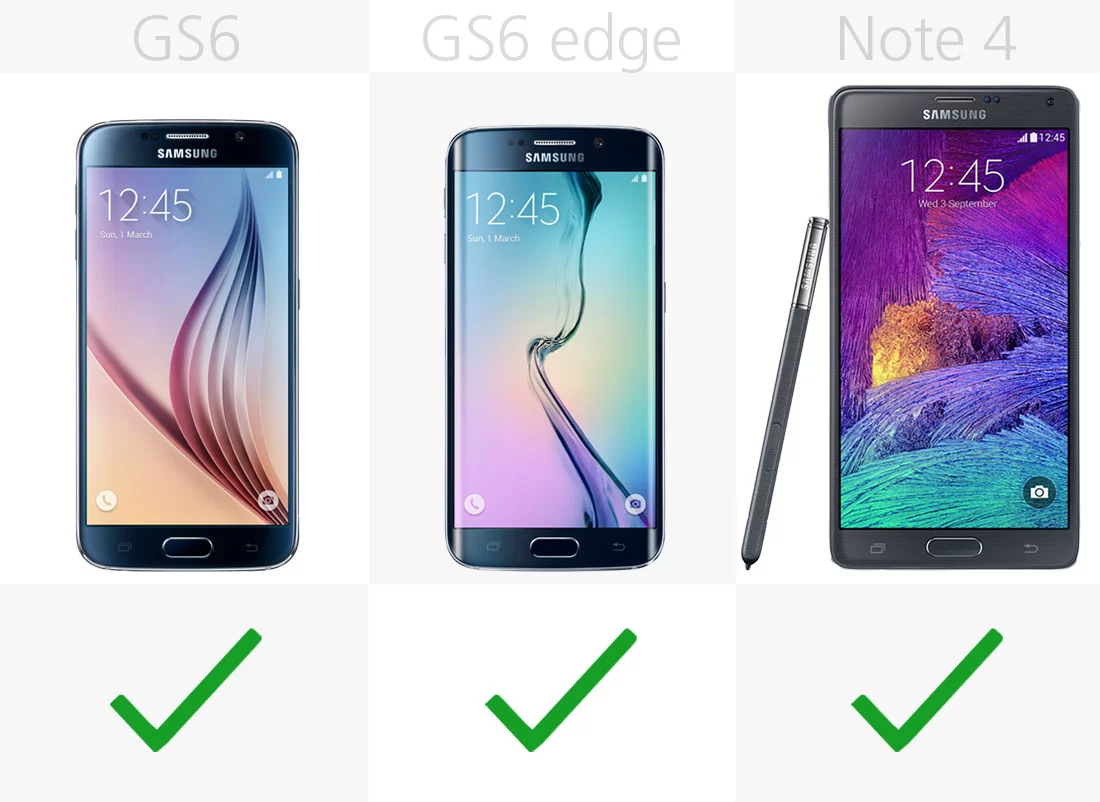
Say your remote control is on the other side of the couch, but you're oh-so comfortable and don't feel like getting up ... all three have IR blasters, and can serve as remote controls for most TVs.
Software

The two new Galaxy flagships launch with Android Lollipop, with a (much less bloated) layer of Samsung TouchWiz on top. Some versions of the Note 4 have been updated to Lollipop, while others are stuck on KitKat.
Release
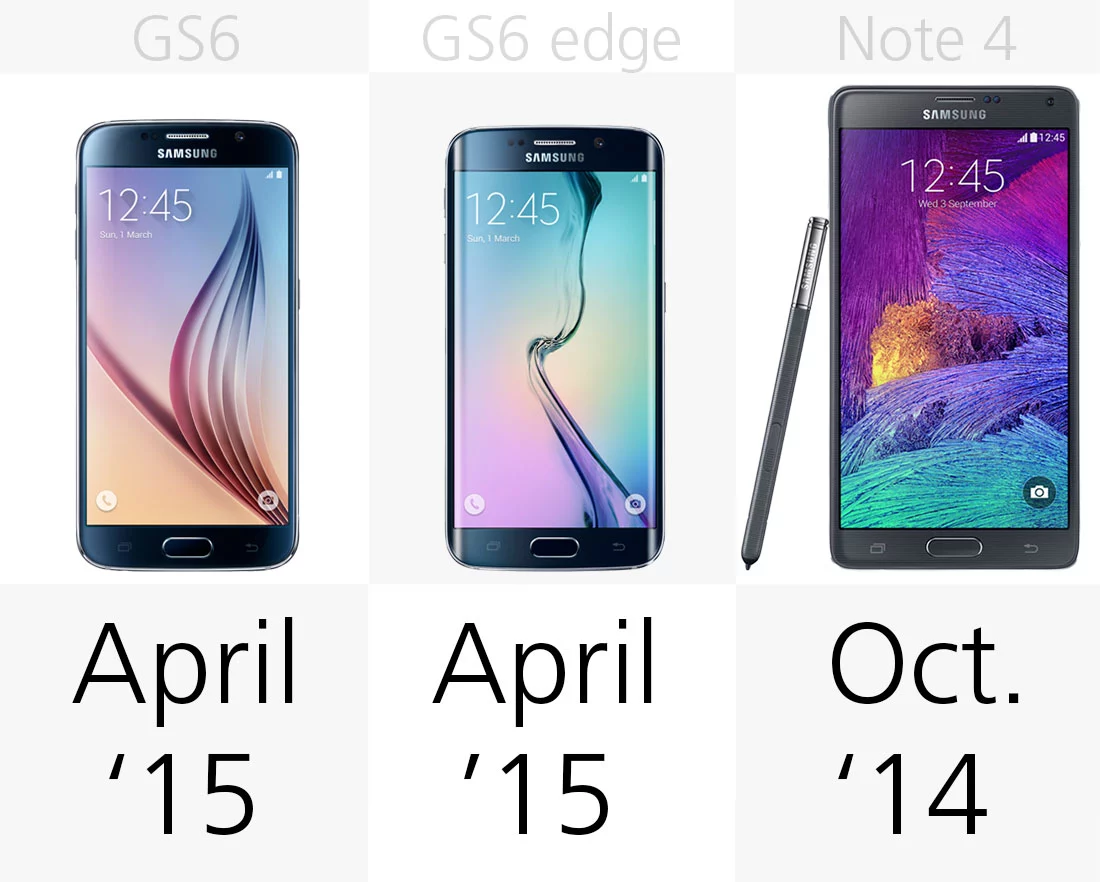
The Note 4 has been on store shelves for over five months now. The GS6 pair launches on April 10.
Starting price (full retail)
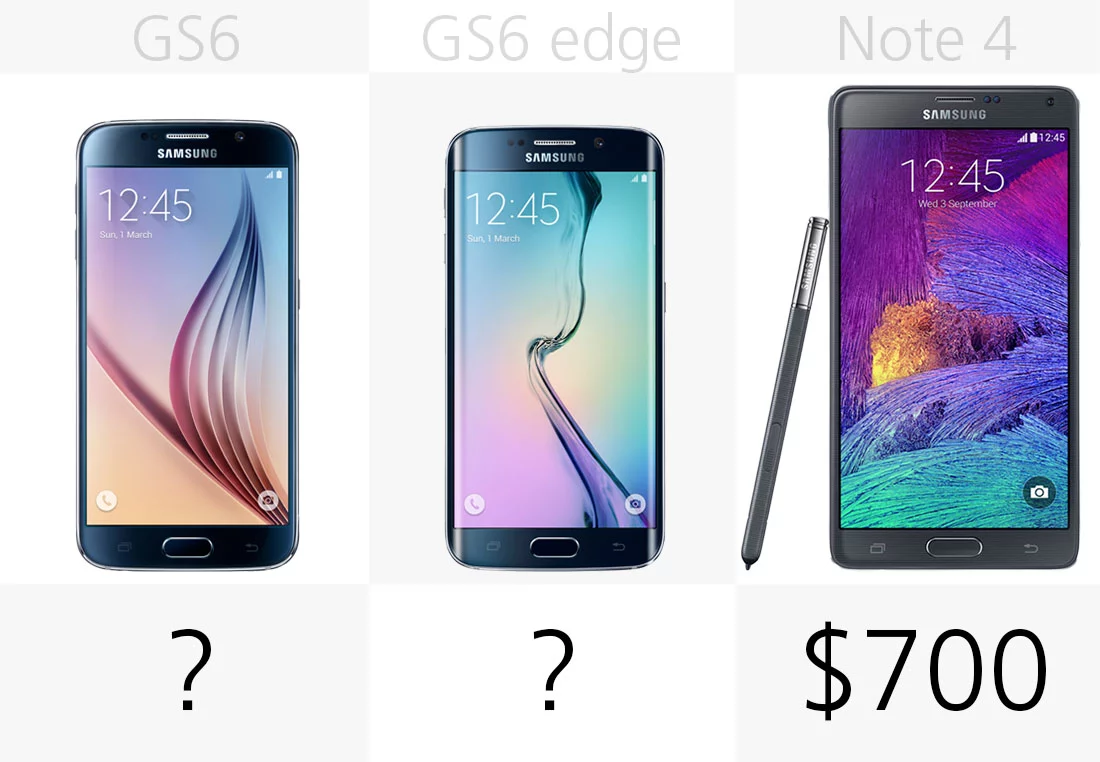
Samsung still hasn't announced pricing for the two Galaxy S6 phones. We also don't know what kind of markup we'll be looking at for the edge's curved screen.
Starting price (on-contract)
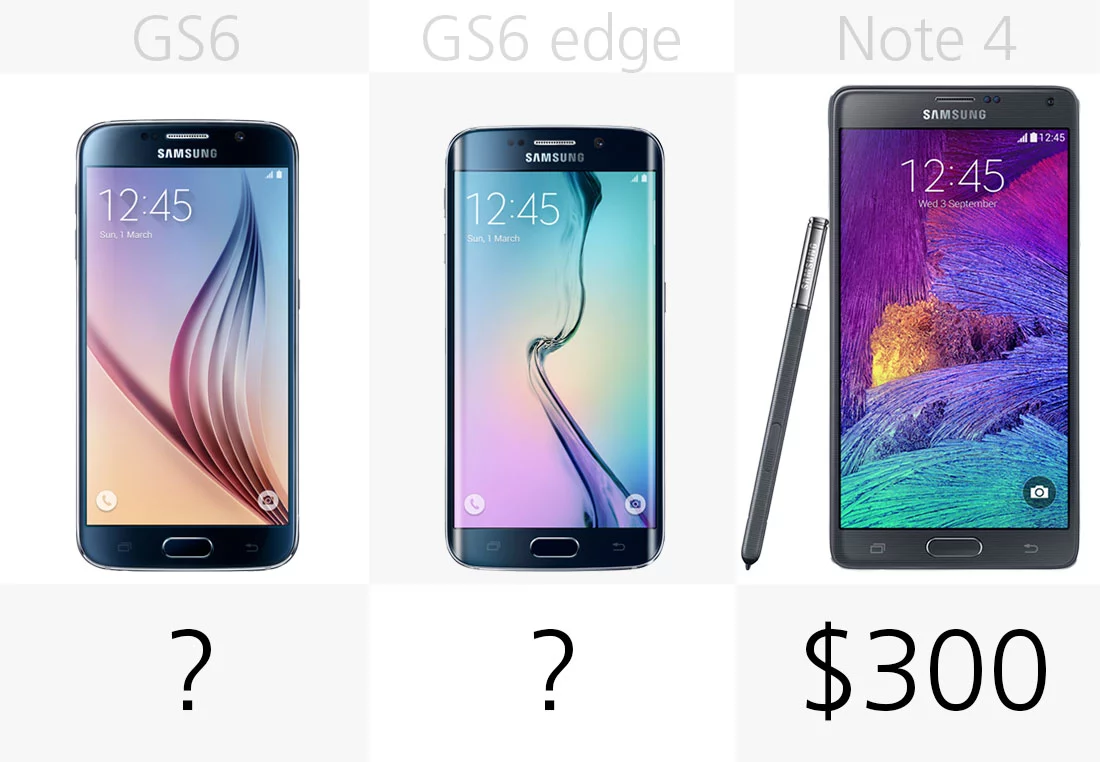
We also don't yet know what the GS6es will cost on-contract. For what it's worth, all recent Galaxy S flagships have started at US$200 on-contract.
For more, you can read Gizmag's full reviews of the Galaxy S6, Galaxy S6 edge and Galaxy Note 4.








